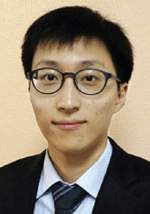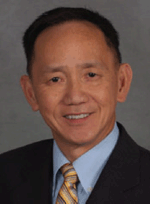A case study for cost-effective design of relocatable deep dewpoint control gas plant
Brian Jung A C , Niel Kritzinger B C , Steven van Wagensveld A and John Mak AA Fluor Corporation, 3 Polaris Way, Aliso Viejo, CA 92698, USA.
B Fluor Australia, 168 St Georges Terrace, Perth, WA 6000, Australia.
C Corresponding authors. Email: brian.jung@fluor.com; niel.kritzinger@fluor.com
The APPEA Journal 57(2) 607-611 https://doi.org/10.1071/AJ16030
Accepted: 17 February 2017 Published: 29 May 2017
Abstract
Australia has significant smaller-capacity gas fields, in relatively remote areas. An economically viable design for the Australian market is a small to mid-size gas plant to produce pipeline-quality gas and recover attractive amounts of liquid products (NGLs) for export by truck.
Such a plant has minimal equipment, is highly modularised to be cost-effective for remote locations with high labour costs, can be relocated, and can be implemented in a substantially shorter time frame than conventional projects.
For the North and South American markets, we have developed a deep dewpointing process that combines high NGL recovery with simplicity of design, yet is flexible enough to accommodate a range of compositions and flow rates. This design is well suited for standardisation of small to medium-size gas plants where feed gas compositions may vary and capacity increases are not well known. A short implementation schedule provides first-to-market economic benefits.
We have developed 3rd Generation ModularisationSM that is proven to significantly reduce a plant’s footprint compared with more traditional modularisation practices. This new approach makes it possible to design a gas processing facility as transportable modules that can be built in the most cost-effective location, are low cost to install and may be relocated in the future. This has been demonstrated in a recent project completed in 2015 for Shell in Canada.
This paper presents the solution for the Australian market that combines the benefits of high gas liquids recovery with low investment, delivered in compact relocatable modules that enable very flexible field development strategies.
Keywords: 3rd Gen ModularisationSM, Australian gas development, capital efficiency, deep dewpointing process, natural gas liquids, offshore gas development, sales gas, shale gas, unconventional gas.

Brian Jung is a process engineer at Fluor Corporation with an extensive background in natural gas processing. He has experience working on process design packages, studies, front end engineering designs, and detailed designs of several natural gas processing technologies such as natural gas liquids (NGL) recovery, acid gas treating, and nitrogen rejection. He recently gained field experience providing start-up support for a gas processing unit licenced by Fluor. Brian received his B.Sc. in chemical engineering from the University of California, Berkeley. |

Principal Process Engineer and the Fluor Australia Process Technology Lead, Niel Kritzinger has 20+ years relevant industry experience, of which 14 years have been with Fluor. For a significant portion of his career, he represented Fluor on client sites, where he worked with and on client teams as Lead Process Engineer. Early in his career as Plant Process Optimisation Engineer at the Synthol unit at Sasol he gained substantial CTL and GTL experience being exposed to the Gasification, Reforming and other gas treating units. He also worked in various locations and projects around the globe for Fluor as Study Lead, Lead Process Engineer and Project Manager in the Refinery and Petrochemical environment. For the last five years, Niel worked in the Fluor Australia, Perth Office as Senior Project Engineer and Process Technology Lead. During this time he worked on projects and proposals for Woodside, Total, ConocoPhillips, ExxonMobil etc. |

Steven van Wagensveld is Fellow and Director of Process Engineering for Fluor Corporation. He holds a B.Sc. in Chemical Engineering from Amsterdam and has 31 years’ experience in Process Engineering design, with a strong focus on the front-end implementation of hydrocarbons projects and the development of new technologies. Steven is a member of Fluor’s Gas Processing Technology organisation and has played key roles in the development of new technologies and implementation of major projects. Steven was Process Technology Manager for Fluor Australia for eight years, responsible for the application of Fluor technology know-how to projects. |

John Y. Mak is a Senior Fellow and Technical Director at Fluor, USA, and leads the technology development, and process innovations for the chemical and energy sectors at Fluor. He manages integrated designs for world-scale gas processing projects, from plant feed inlet separation, gas treating and conditioning, liquid recoveries to nitrogen rejection, LNG liquefaction and LNG regasification. He leads the development for the gas processing projects, onshore and offshore, from conceptual design, FEED, detailed design to plant commissioning and startup. He is the primary inventor for over 80 patents in technologies in gas processing, gas treating, ethane and propane recoveries, nitrogen rejection, emission eliminations, LNG liquefaction and LNG regasification. He has over 100 worldwide publications in the gas processing industries. He is the coauthor of ‘Handbook of Liquefied Natural Gas’ (1st edn, 2014) and ‘Handbook of Natural Gas Transmission and Processing’ (3rd edn, 2015), published by Elsevier Gulf Publishing. |
References
Geoscience Australia and BREE (2014). ‘Australian Energy Resource Assessment.’ 2nd edn. (Geoscience Australia: Canberra.)Mak, J., Devone, S., and Shih, J. (2015). New NGL recovery process for unconventional gas applications. Fluor Energy and Chemicals, Americas.


